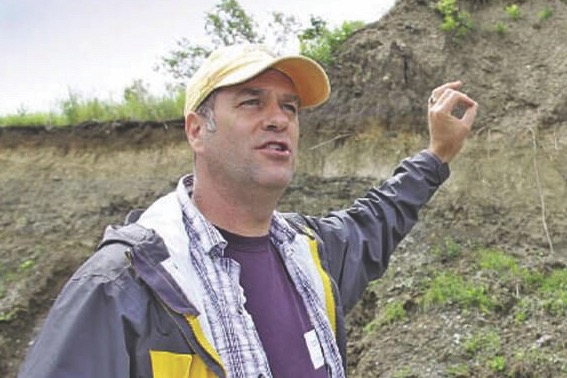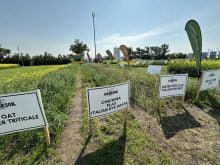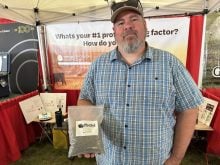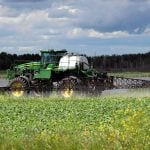If you can tackle only one thing on your farm to enhance crop yields, let it be ways to improve soil organic matter.
That may be somewhat of an oversimplification considering all of the factors that affect yield, but protecting and, where needed, improving soil organic matter levels may deliver the biggest bang for the buck, says a University of Manitoba (U of M) researcher.
David Lobb, a U of M soil science professor, says with a lot more talk in recent years about measuring and improving “soil health,” he considers the two main indicators of soil health to be soil organic matter and crop yield.
Read Also
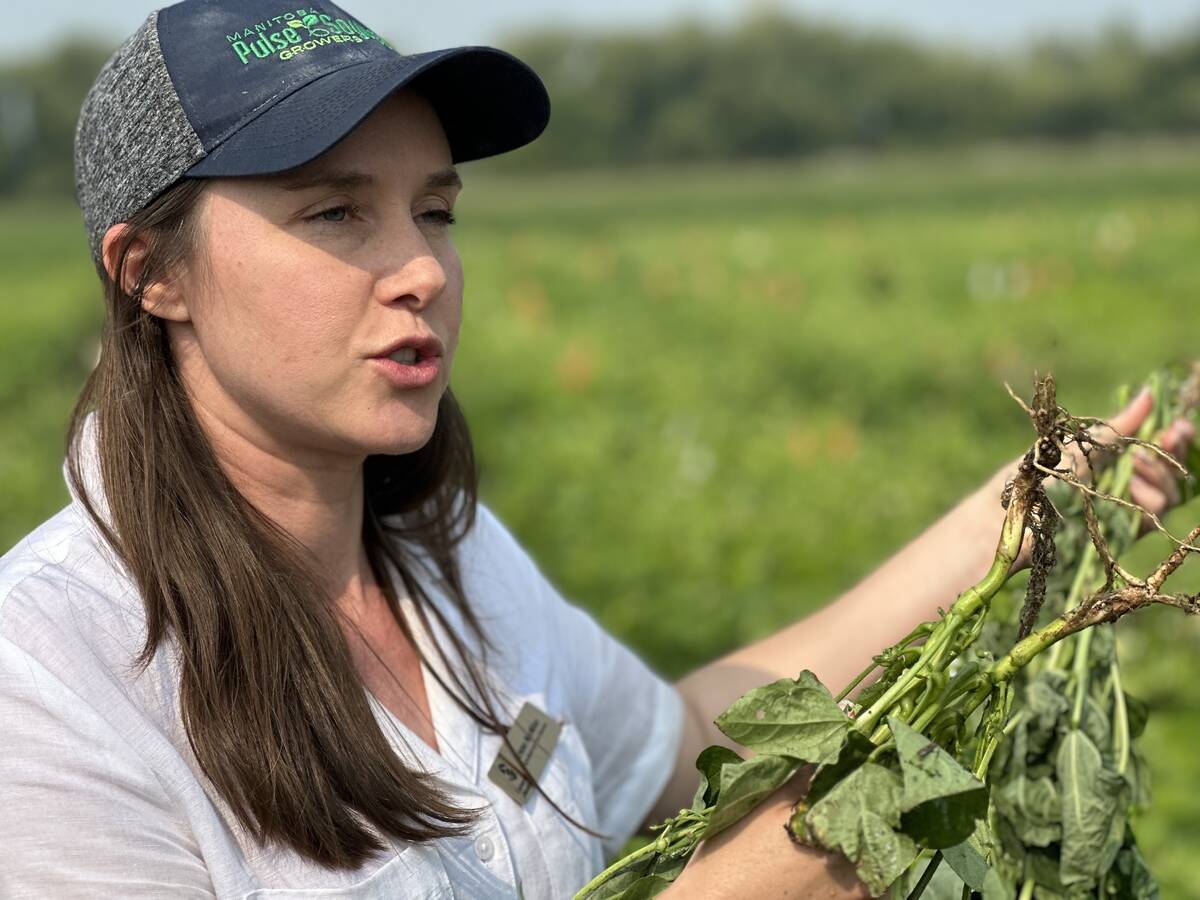
Lower nitrogen rates in dry beans could pay off for farmers
Manitoba research is testing whether reduced nitrogen fertilizer in dry beans can maintain yields while cutting costs and lowering greenhouse gas emissions.
“I sometimes get into trouble for oversimplifying it,” says Lobb. “But really those are the only two parameters a farmer needs to look at — what are soil organic matter levels and what are yields like? If you have relatively good levels of soil organic matter and good to high yields, then you have healthy soil.”
Lobb, whose main area of research involves looking at factors that affect soil movement and various types of soil erosion, says soil organic matter levels are vital to crop production.
An important role
Soil organic matter, which essentially comes from plant residues, is described as a revolving nutrient bank account and an agent to improve soil structure, maintain tilth and minimize erosion.
Soil organic matter contains a storehouse of plant nutrients. As it decomposes, the nutrients are released in a plant-available form. The stable organic fraction (humus) adsorbs and holds nutrients in a plant-available form.
Soil organic matter facilitates the movement of water into, and storage within, the soil. It influences chemistry and the efficient use of fertilizer and storage of nutrients. And the level of soil organic matter has a direct effect on the activity of soil biology. An active soil biology consumes organic materials leading to the storage and release of nutrients.
“By and large, high organic matter and high biological activity in the soil helps all inputs to be used more efficiently,” says Lobb. “Soil organic matter is absolutely critical to crop growth and production.”
Across western Canadian farmland, the level of soil organic matter in various soil types varies widely. Even under natural conditions before there was any farming, soil organic matter levels might range from two to four per cent on sandy soils and up to four, eight or even 10 per cent on black or clay-type soils.
On hilly land there is often greater variation in soil organic matter within a single field than there is across the region due to the influence of topography on soil moisture conditions. It is estimated with various cropping practices over the past 120 years, soil organic matter levels have declined by 30 to 50 per cent and amplified this variation.
A slow process
Lobb says there is no overnight fix to restoring or increasing organic matter levels in the soil through adjusted cropping practices. A general trend in the 1980s across Western Canada toward conservation farming, which involved reduced and zero-till seeding measures, certainly helped but wasn’t the total solution.
“It is a slow process to rebuild soil organic matter,” says Lobb. “Sometimes we hear about a new cropping practice such as cover cropping that some proponents claim increased soil organic matter levels perhaps from four per cent to 12 per cent in five to 10 years. Claims like that are not only unbelievable but impossible — it physically can’t happen that fast. What they’ve done is cherry-pick certain locations in a field to test for soil organic matter to come up with those numbers. Really, you can make the numbers say anything you want if you know when, where and how to sample.”
Lobb says it takes sound sampling techniques and planning to come up with an accurate and useful measurement of soil organic matter for a field. Such a plan accurately represents the changes in organic matter over soil depths and across the field, catching the highs and lows.
Lobb blames the loss of topsoil and organic matter primarily on erosion, and not just wind erosion. He says it is a combination of wind erosion, water erosion and tillage erosion. “During the days of conventional farming practices and even today when tillage is used, we find that wind and water erosion can contribute considerably to soil loss,” says Lobb. “But my research has shown the real culprit is tillage erosion.”
He points out most research centres studying all aspects of crop production, including soil organic carbon, conduct studies on relatively flat topography with highly productive soils. He says those studies aren’t representative of the real-life field conditions where 75 to 90 per cent of the farmland in Western Canada has variable soil types and variable topography.
“Wind and water erosion can cause significant movement of soil, but it’s not as serious as most people believe,” says Lobb. “My research over the years has been on farmland with real-life conditions and variable landscapes. Under these conditions, tillage erosion has a much greater impact on soil movement and losses than wind and water erosion.
“You ask most farmers where they see the most soil loss and lowest production and they point to the knolls and hilltops. They are drier and less productive, so they naturally have lower organic matter levels, and then with tillage the losses are even greater.”
Lobb says research on variable topography shows conservation tillage or even direct seeding with an air seeding system equipped with high disturbance openers “will cause as much soil movement and organic matter loss than a moldboard plow.” Lobb says a plow will turn soil over and it moves about two to three feet, whereas conservation tillage tools or an air seeding system travelling at faster speeds will move less soil but move it up six to 15 feet. With each pass on a field over the years, the soil moves further down the slope until it collects in the low spot in the field.
Lobb is critical of precision farming recommendations, which encourage farmers to view the variable productivity of soil as a simple, manageable problem. “You have that white hilltop that isn’t very productive and it’s only five or 10 per cent of the field, so it’s no big deal,” he says. “But if you include the area surrounding the spot that also isn’t very productive, then the affected area becomes 15 or 25 per cent of the field. The low-producing area will continue to grow in (size). And then it is no longer just a minor problem.”
Lobb says the topsoil and organic matter from the hilltop and upper slopes don’t necessarily leave the field. They just accumulate in the low-lying areas. “You can have three feet of topsoil at the bottom and no topsoil at the top,” he says. How can you change that situation?
Remedial measures
Remedial measures that encourage more crop growth on hilltops or adding compost or manure can help but rebuilding the soil organic matter is a slow process. However, in some farm situations, Lobb says there may be a faster remedy.
He points to a practice that has been used in some countries for centuries. “It involves collecting the extra topsoil from that deep layer at the bottom of the field and moving it to the low-producing hilltop,” he says.
“You need to have the proper field conditions. It may not be something you do every year, but it is something you work into your management plan,” he says. The exact amount will depend on each situation but as an example a scraper could be used to remove four inches of topsoil from the lower level on the field to be applied and spread two inches deep (doubling the area) on the low-producing hilltop.
Lobb says applying manure, for example, to an eroded hilltop to rebuild organic matter can help, but it is a slow process. It may take 25 to 30 years of manure application to increase soil organic matter by one per cent. “The manure has to decompose, so it is a slow process to build up what we consider stable soil organic matter,” he says. “Whereas, if you move the topsoil from the low areas to the hilltop, it is already stable and is ready to produce crops.” Moving soil is an expense, but Lobb says some research projects have shown a payback through improved crop production within three to five years.
Lobb says it is important to eliminate high disturbance tillage on vulnerable landscapes and then consider whether moving topsoil back to eroded hilltops might be a viable option.


